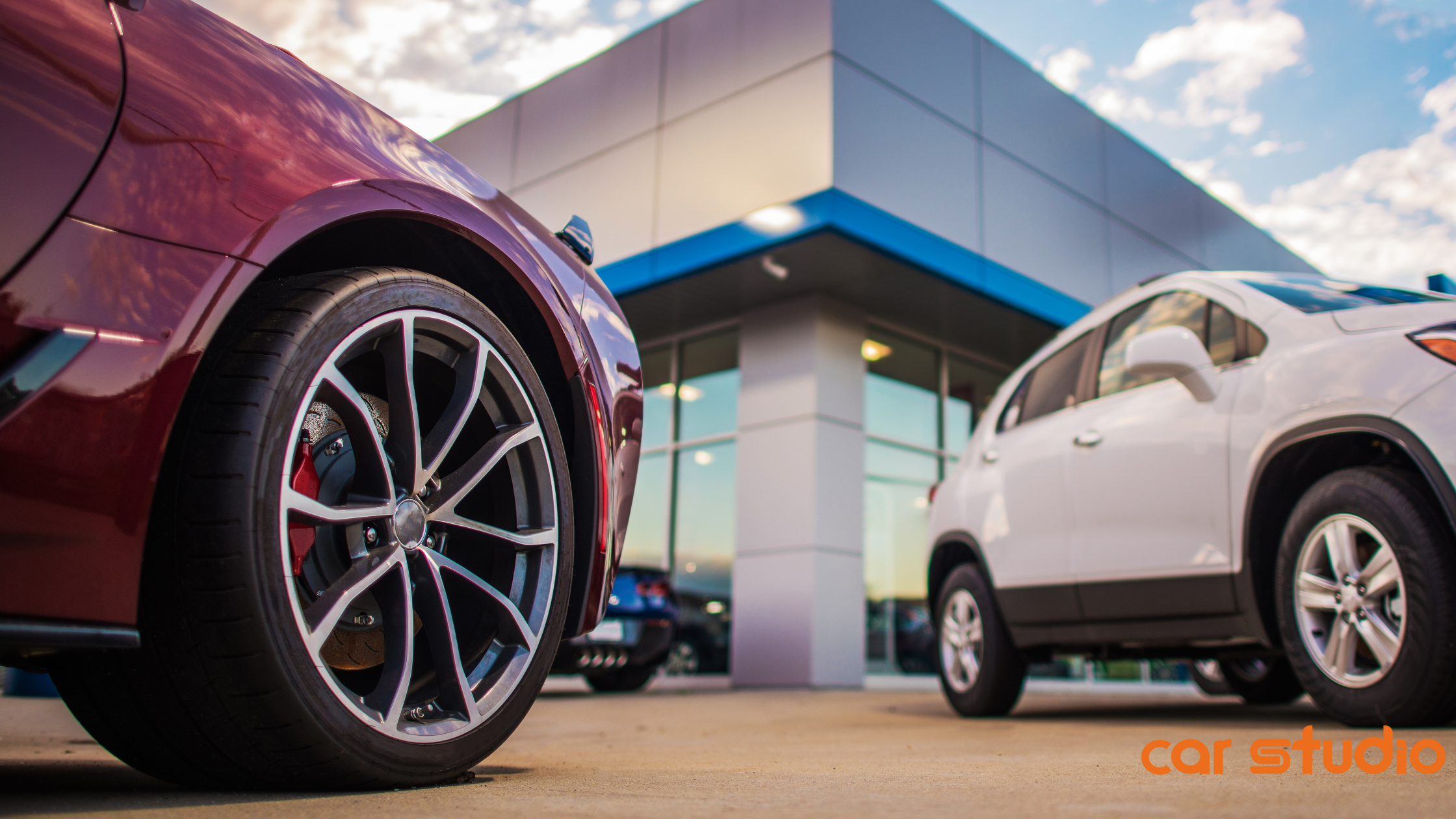
2025 Automotive Marketing Trends: Strategies That Actually Work
2025 Automotive Marketing Trends: Strategies That Actually Work for Dealers
Introduction: Why 2025 Isn’t Just Another Year
If you’ve been in the car business long enough, you know it’s never boring. But something feels different about 2025. It’s not just another tick on the calendar it’s a turning point. The pace of change in how customers shop, research, and decide on vehicles has accelerated beyond what many dealerships imagined even five years ago.
A decade ago, the big question was, “Should we invest in digital marketing?” Now, the question has become, “How fast can we adapt to AI-driven marketing before we’re left behind?”
I’ve spent the past year talking to dealers, sales managers, marketing directors, and even tech founders working on AI for automotive. The takeaway is clear: technology is no longer optional. It’s the engine that fuels sales, customer trust, and long-term loyalty.
So let’s dive into what’s changing, why it matters, and most importantly how you can take action today to build a strategy that still works tomorrow. Along the way, I’ll bring in insights from global reports like 2025 Global AI Trends in Automotive Marketing, tactical guides like Top Automotive Marketing Trends for 2025, and lessons from social media playbooks such as Automotive Social Media Marketing Trends & Tips 2025.

1. The Rise of AI in Automotive Marketing
First Impressions Sell Cars
We all know it: when a potential buyer scrolls through listings, the photo is what stops or doesn’t stop their thumb. That’s where AI-powered photography steps in. Tools once reserved for agencies are now accessible to every dealership.
Think of a Honda Civic photographed in a crowded lot. With a few clicks, AI can:
The result? Customers trust the listing more. They click. They call. They come in.
(If you want to see what separates ordinary from “scroll-stopping,” check out What Makes a Scroll-Stopping Car Photo: AI Insights. It’s eye-opening.)
From Showroom to Living Room: VR & AR
A dealership I visited in Milan last year offered VR test drives. Customers could sit in a lounge, put on a headset, and virtually explore the interior of any model, change colors, or simulate night driving. One teenager told me, “It’s like TikTok met a dealership.”
This isn’t a gimmick. It’s the new expectation. Imagine reaching a customer who’s hesitant to drive across town they can explore your cars from their couch. That interaction alone can shorten the sales cycle dramatically.
Machine Learning: Knowing Customers Before They Ask

Personalization isn’t about calling someone by their first name in an email. It’s about anticipating what they want. AI-driven machine learning tools study browsing behavior, CRM history, and demographic patterns.
For example:
This isn’t manipulative. It’s respectful. It shows you’re listening.
2. Optimizing Online Listings with AI
Consistency Is Trust
Imagine being a buyer who sees the same car listed on three different platforms. On one, there are 8 blurry photos. On another, 15 crisp images. On a third, the mileage is wrong. Inconsistency screams unprofessional.
AI fixes this. It ensures your listings photos, descriptions, specs are identical and optimized across Autotrader, Cars.com, Facebook Marketplace, and your own site. Consistency builds credibility, and credibility sells.
Visuals That Do the Heavy Lifting
Buyers don’t just want to read about cars; they want to see them. AI makes it possible to create polished photos, 360-degree spins, and even short video walkarounds at scale. What once took a marketing team days can now happen in minutes.

And the payoff? Listings with enhanced visuals receive 2x more engagement and faster conversions.
3. Data-Driven Decision Making
Analytics for Smarter Choices
One dealer in Texas told me, “I used to buy cars for my lot based on gut. Now, AI dashboards tell me what my market wants before I even see it on the street.”
Data doesn’t replace intuition—it sharpens it. With AI analytics, you can see:

Predictive Analytics: Playing Chess, Not Checkers
Imagine knowing before the rush which cars will be hot this summer. Predictive analytics crunches macro data (like fuel prices or seasonal trends) with your local sales patterns.
Example: If gas prices rise, AI predicts a spike in hybrid interest. Dealers who stock up early ride the wave while others scramble.
This is where competitive advantage really shows.
4. Social Media: Authenticity Meets AI
Here’s the truth: social media sells cars. Not directly, but by building trust, familiarity, and relevance. AI tools can schedule, edit, and optimize posts but the content still needs a human heartbeat.
I’ve seen dealerships thrive by:
It’s the mix that matters: AI gives you efficiency, but people give you connection.
(More tactical tips are in Automotive Social Media Marketing Trends & Tips 2025.)
5. Building a Future-Proof Strategy
Future-proof doesn’t mean predicting everything. It means building agility.

Key ingredients include:
6. Stories From the Field
Stories like these remind us: AI is just a tool. Success comes from blending tech with human creativity.
7. Beyond 2025: Where We’re Headed
What’s next? Based on global patterns:
The dealerships who experiment early will lead.

Conclusion: Leaning Into the Shift
The future of automotive marketing isn’t coming it’s here. Dealers who embrace AI, data, and authentic digital storytelling are already pulling ahead. Those who wait for “proof” may find the proof is their competitors outselling them.
So take the first step this quarter. Test an AI photo editor. Launch a personalized campaign. Try a VR demo. Each small step builds momentum toward a dealership that’s not just surviving 2025 but thriving in it.
Because in the end, cars aren’t just metal and rubber they’re experiences. And marketing in 2025 is about creating experiences that feel personal, modern, and trustworthy.
FAQ: Straight Answers for Dealers
Q: What’s the #1 benefit of AI in marketing?
The single biggest advantage is efficiency paired with quality. Tasks that once took hours like editing dozens of car photos, writing consistent descriptions, or scheduling social posts can now be handled in minutes with AI. That doesn’t just save your team valuable time; it also raises the overall standard of your marketing materials. You end up producing polished, consistent, and customer-ready content faster, which means your salespeople can spend less time fixing details and more time closing deals.
Q: Do I need expensive hardware for VR/AR?
Not necessarily. A few years ago, VR meant investing in headsets and specialized equipment. Today, many platforms run directly on smartphones, tablets, or web browsers, making immersive experiences accessible without big upfront costs. Dealers can start with simple 360-degree photo and video experiences, then scale into more advanced VR or AR tools as the demand grows. This flexibility allows you to test the waters without breaking the budget.
Q: Can AI tools integrate with my current DMS/CRM?
Yes, most are designed to. Modern AI solutions are built to “plug in” to the systems you’re already using, whether that’s a DMS for inventory management or a CRM for customer communication. This means you don’t have to overhaul your entire tech stack to see results. Instead, AI enhances the tools you already rely on helping you automate repetitive work, gain better insights, and deliver more personalized experiences within the systems your team already understands.
Q: Is this all hype?
No. The adoption curve is already visible, not just in big global brands but also in small and mid-sized dealerships. We’re seeing real results: higher engagement on listings, better customer targeting, and stronger sales pipelines. The shift is happening quickly, and the dealers who wait too long risk falling behind competitors who are already using these tools to stand out. AI isn’t a futuristic concept anymore it’s a practical advantage available today.
Q: How should I start?
Start small and focused. You don’t need to transform your entire dealership overnight. Pick one area where AI can deliver an immediate win maybe automated photo editing for your listings, CRM personalization for your outreach campaigns, or analytics tools that show you which cars to stock. Test it, measure the results, and build confidence. Once you see the benefits in one area, it becomes easier to scale AI across the rest of your marketing operations.
